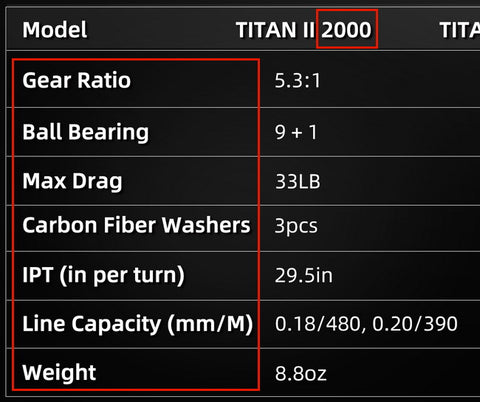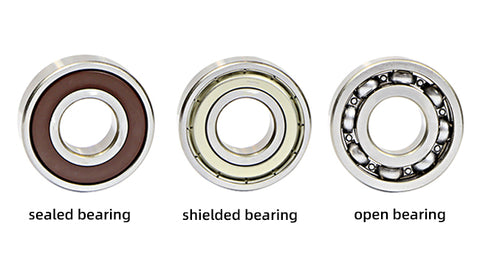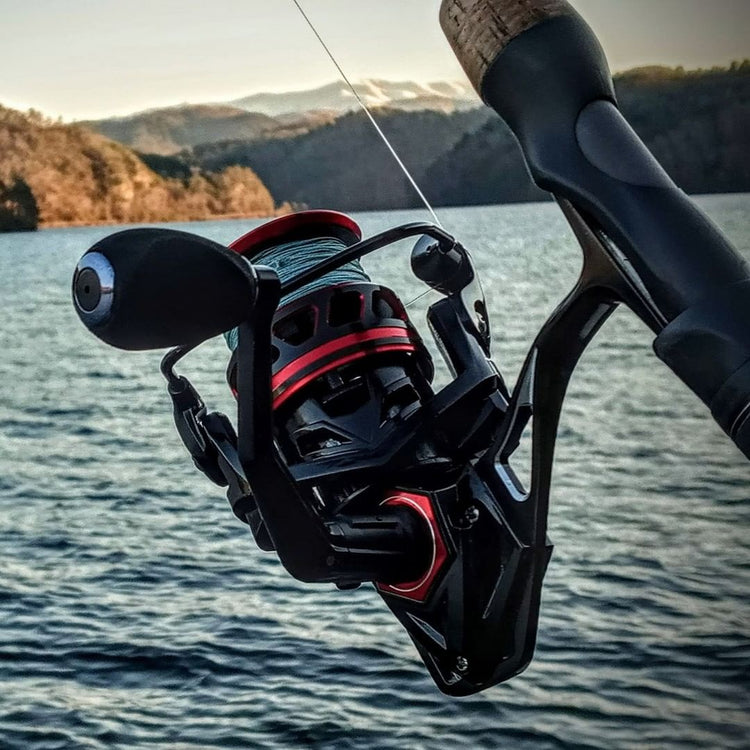When you are looking through the spinning reels on market, you will find much information listed on the reel manual. Below is a simple guide to understanding what the numbers mean on spinning fishing reels.

Spinning Reel Size
Well to be honest each spinning reel manufacturer rates their reel size in different ways so there is no fixed rule. In general, modern spinning reels will usually have the numbers presented in thousands (i.e. 2000) but they may be in double figures (i.e. 20) and occasionally in hundreds (i.e. 200). Essentially these are the same approximate size, it’s just all to do with how each individual fishing reel manufacturer has branded their merchandise.
The smaller the model number the smaller the reel, and the less length of fishing line the reel can hold.

Spinning Reel Line Capacity
Line capacity of a fishing reel is the largest length of line the spool can hold without overloading. Most manufacturers are printing the number on the side of the spinning reel. It states capacity as a pound-test weight/length of line or diameter of line/length of fishing line.
For example: 0.20mm/420Yds.
Spinning Reel Gear Ratio
Gear ratio refers to the number of times the bail rotates around the spool with a single turn of the reel handle. Most spinning reels feature a gear ratio of 5.2:1 to 6.2:1 although some manufacturers are now offering models with a 7.0:1 gear ratio for anglers who want to quickly retrieve their fishing line when fishing in deep water. A 4:1 gear ratio is considered a slow-speed reel, the benefit of a low speed-speed reel is that they can provide more torque for reeling in large fish.
Spinning Reel Ball Bearings
The number can range from 3 to as many as 11, and they are placed within the body of the reel for smoothness, support and stability. Some will be placed in the handle, the line roller for added features.

The three main types of bearings in fishing reels are open, shielded and sealed. The balls are exposed in open bearings, so there is less friction on them and they spin faster. But they are more susceptible to corrosion from water and sand. Shielded bearings typically have a metal shield covering the bearing. Sealed bearings have a rubber seal, which provides the most protection against the water and sand.
Generally speaking, the more bearings of the same quality a reel contains, the smoother the reel will perform. High-quality bearings also make for longer casts, easier reeling, and better performance when you have a big fish on the line.
Spinning Reel Max Drag
A drag systems use a series of disks or washers connected to the spool. When a fish makes a run, the washers rub together to slow the spool, apply drag pressure and slow down the movement of the fish without breaking the line. Most reels will state a maximum the amount of drag pressure they can withstand in pounds or kilograms.
Spinning Reel Weight
Two main factors that will determine the weight of the spinning reel are the reel size and it’s frame/body material. The body of a spinning reel is either made of plastic, aluminum, graphite or sometimes a combination. Reels that made of graphite are lightweight but not very durable. While aluminum reels are popular because they are durable. Advanced material used in high-end reels is carbon fiber.
The weight of a reel is usually the first thing that fishermen will consider. Less strain will be put on the wrist and forearm when dealing with a lighter reel, and this is important for those that spend a great deal of time on the water.
Understanding what the numbers mean on a spinning reel is essential, and it will help you to make a quicker and right decision for your next purchase.
More articles:
Spinning Reel 101 - What Are The Visible Parts Of A Spinning Reel
Spinning Reel 101 - What To Consider When Buying A Spinning Reel

